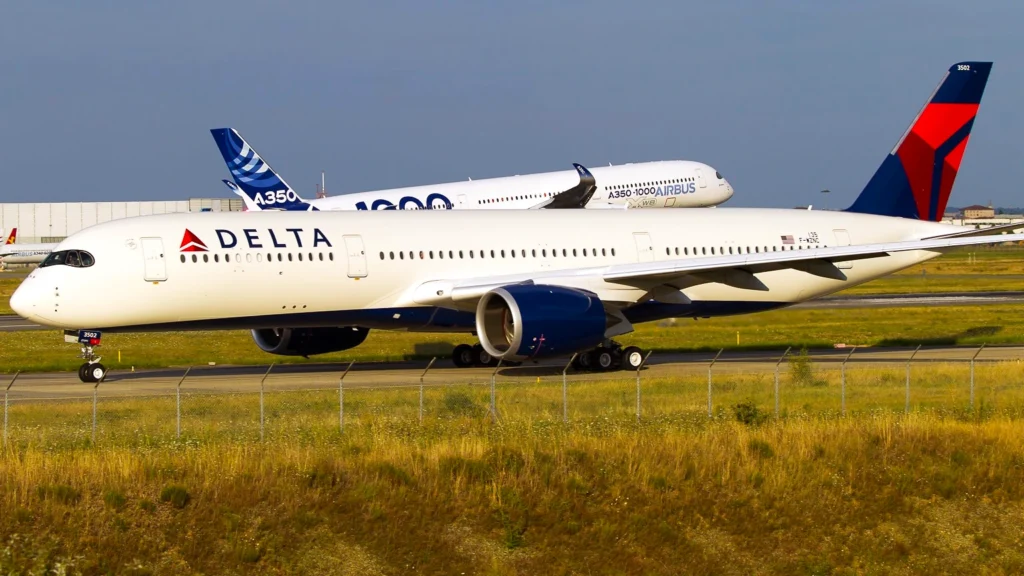Flight diversions are one of the rare but serious realities in aviation, often stemming from unexpected mid-air developments that require prompt action. One recent case that brought attention to this process involved Delta Air Lines Flight DL275, which was diverted to Los Angeles International Airport (LAX) under unforeseen circumstances. This article explores the key details of that diversion, reasons such incidents occur, how airlines respond, and what it means for passengers.
The Route and Nature of Delta Flight DL275
Delta Flight DL275 typically operates as a long-haul international flight. While its origin and destination may vary by season or operational requirements, the aircraft has frequently flown routes such as Detroit to Tokyo, Atlanta to Seoul, and other trans-Pacific or transatlantic services. Due to the aircraft type and flight duration, DL275 is equipped to handle extended flights with onboard amenities suited for international travelers.
On the day of the diversion, the aircraft was en route when an onboard issue prompted the crew to redirect to LAX, one of the busiest and most equipped airports in the United States. Though Delta has not officially confirmed the exact reason for the diversion, flight tracking data and reports from sources suggest that it was likely due to either a technical fault or a medical situation.
Possible Reasons for a Mid-Flight Diversion
Several causes can lead a commercial flight like DL275 to be diverted. These typically fall into five main categories:
1. Medical Emergencies
A passenger or crew member may suffer a sudden health issue requiring immediate medical attention. In such cases, the aircraft lands at the nearest appropriate airport with medical services available on the ground.
2. Mechanical or Technical Alerts
Aircraft are equipped with sensitive monitoring systems. If a sensor detects abnormal performance, the pilot may decide to land at a suitable airport as a precaution.
3. Severe Weather
Unexpected weather patterns such as turbulence, lightning, or poor visibility can render the planned destination unsafe for landing.
4. Security or Safety Concerns
Any perceived threat onboard, such as a suspicious object or disruptive passenger, can lead to the pilot initiating an emergency landing.
5. Destination Airport Limitations
If the scheduled airport is temporarily closed, facing congestion, or experiencing staffing issues, the airline may opt to divert to another hub.
Why LAX Was Chosen as the Diversion Point
In the case of DL275, LAX was likely selected due to several strategic advantages:
- Massive Infrastructure: LAX is equipped to handle large international aircraft, with multiple runways and gates capable of accommodating wide-body jets.
- Emergency Response Readiness: It has immediate access to medical staff, fire services, and maintenance personnel.
- International Customs Support: For overseas flights, diversion to an airport with customs and border protection agents is crucial.
- Rebooking Logistics: As a Delta partner hub, LAX offers a smoother transition for affected passengers needing to be rebooked on alternate flights.
What Happens During a Diversion
When a pilot decides to divert, the process is carefully coordinated with Delta’s 24/7 operations center and air traffic control. The flight crew will:
- Notify passengers about the situation and diversion plans
- Communicate with ground staff to prepare for the incoming aircraft
- Monitor fuel levels and assess weather conditions en route to the alternate airport
- Ensure that onboard safety protocols are followed
Once the aircraft lands, priority is given to the reason for diversion. For example, if the issue is medical, paramedics immediately board. If it’s technical, maintenance crews assess the aircraft while passengers may be asked to remain on board or deplane depending on the severity.
Passenger Experience and Airline Support
For travelers, flight diversions can be stressful and inconvenient. However, Delta Air Lines has a reputation for proactive passenger care during such irregular operations. In situations like the DL275 diversion, Delta typically:
- Rebooks travelers on the next available flights to their intended destinations
- Provides hotel accommodations if delays are prolonged or overnight stays are required
- Offers food vouchers, SkyMiles, or other goodwill compensation depending on the situation
- Maintains open lines of communication through gate agents, emails, and mobile alerts
Passengers on DL275 reportedly received updates through onboard announcements and assistance upon arrival at LAX. The goal is always to minimize disruption while prioritizing safety.
Frequency and Handling of Diversions
Despite their dramatic reputation, diversions occur in less than 1% of all commercial flights. Airlines like Delta prepare extensively for such scenarios through:
- Highly trained pilots and flight crews
- Ground operations teams ready to respond 24/7
- Sophisticated technology for monitoring aircraft health in real time
- Established emergency response protocols with major airports
Airports like LAX are key players in handling diversions efficiently due to their size, staffing, and readiness.
A Reminder of Aviation’s Core Priority: Safety
The incident involving Delta Flight DL275 serves as a timely reminder that air travel, while incredibly safe, must always be prepared for the unexpected. Diversions are not taken lightly. When they happen, it means a team of professionals—pilots, dispatchers, mechanics, and customer service reps—is working quickly to resolve the issue and care for passengers.
In this case, DL275’s diversion ended safely, with passengers ultimately continuing their journey. While it may have disrupted schedules, the quick thinking and preparedness of Delta’s team ensured that everyone remained safe.
Flight DL275’s experience highlights why major airlines invest heavily in training, technology, and emergency procedures. And for travelers, it’s reassuring to know that even when things don’t go as planned, safety and support remain the highest priorities.







/2025/07/Julia-Benson2.png)

